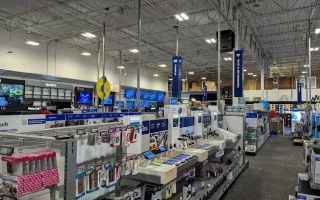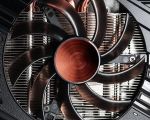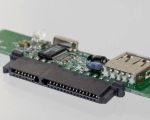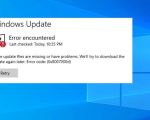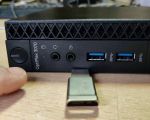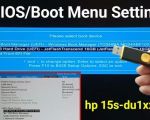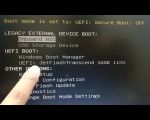How to Repair Desktop Computer: A Comprehensive Guide for Fixing Common Issues
- Understanding Common Desktop Computer Issues
- Tools Needed to Repair a Desktop Computer
- Step-by-Step Guide to Repairing Your Desktop Computer
- When to Consider Professional Help for Desktop Repairs
- Real-Life Case Study: Repairing My Desktop Computer
Understanding Common Desktop Computer Issues
If you're wondering how to repair a desktop computer, it's important to first identify the common issues that many desktop users face. Desktop computers, like any other electronic device, can experience a variety of problems ranging from hardware failures to software glitches. Here are some of the most common issues that might require troubleshooting or repair:
- Power Issues: One of the most frustrating problems is when your desktop won’t power on. This could be due to issues with the power supply, faulty cables, or even problems with the motherboard.
- Slow Performance: If your desktop is running slowly, it could be due to outdated software, insufficient memory, or a cluttered hard drive.
- Overheating: Desktop computers often overheat due to dust buildup in the cooling system, improper ventilation, or malfunctioning fans, leading to automatic shutdowns or reduced performance.
- Display Issues: A blank or flickering screen can be caused by problems with the graphics card, cables, or the monitor itself.
- Hard Drive Failures: Hard drive failure is a common issue, which can result in data loss or system crashes. If you hear unusual noises from your desktop, the hard drive may be failing and need replacement.
Understanding these common issues is the first step in knowing how to repair your desktop computer effectively. Once you’ve identified the problem, the next step is to gather the necessary tools and begin troubleshooting.

Best Buy
4210 Centerplace Dr, Greeley, CO 80634, USA
Tools Needed to Repair a Desktop Computer
Before you dive into fixing your desktop, you’ll need some basic tools to get the job done. Here are some essential tools to have on hand when performing desktop repairs:
- Phillips Head Screwdriver: A Phillips head screwdriver is essential for opening your desktop case and removing screws that hold various components in place.
- Anti-static Wrist Strap: An anti-static wrist strap will prevent static electricity from damaging sensitive components like the motherboard and memory.
- Compressed Air Can: Use a can of compressed air to clean out dust from the fans, vents, and other internal components of your desktop to avoid overheating.
- Thermal Paste: If you're replacing the CPU or reapplying thermal paste to the heat sink, make sure to have some high-quality thermal paste on hand for proper heat transfer.
- Replacement Parts: Depending on the issue, you may need replacement parts such as a new power supply, graphics card, or hard drive.
Having the right tools will make the process of repairing your desktop computer smoother and safer. It’s important to take proper precautions to avoid causing more damage during the repair process.
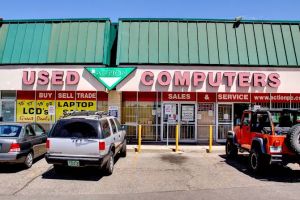
Action Computers Inc. -- Denver Location
2890 S Colorado Blvd F, Denver, CO 80222, USA
Step-by-Step Guide to Repairing Your Desktop Computer
Now that you have your tools, let’s walk through a basic guide on how to repair a desktop computer. While each issue will have its own solution, the following steps outline general troubleshooting methods for fixing common problems:
- Step 1: Troubleshooting Power Issues: If your desktop won’t power on, start by checking the power supply and ensuring the cables are properly connected. If the power button isn’t working, try using the reset button or check for a faulty power supply unit. If everything seems to be plugged in correctly and the computer still won’t turn on, you might need to replace the power supply.
- Step 2: Cleaning Your Desktop for Overheating: Overheating can cause performance issues and shutdowns. Start by opening the desktop case and using compressed air to clean out dust from the fans, heat sinks, and vents. Also, check to make sure the fans are spinning properly and that there’s adequate airflow around the case.
- Step 3: Replacing a Faulty Hard Drive: If you suspect a failing hard drive, back up your data as soon as possible. To replace the hard drive, disconnect the cables, remove the screws, and slide the old hard drive out. Then, install the new hard drive, reconnect the cables, and reinstall your operating system and data.
- Step 4: Resolving Slow Performance: For slow performance, start by running disk cleanup and defragmenting the hard drive. If the issue persists, check your computer's memory (RAM) usage. If necessary, upgrade your RAM or clean up unnecessary software from your system. You can also reinstall the operating system if software issues continue to slow down your desktop.
Following these steps should help you repair your desktop computer and resolve common issues. However, if the problem persists or you're not comfortable with the repair process, it may be time to seek professional help.
When to Consider Professional Help for Desktop Repairs
While many desktop repairs can be done at home, there are times when it's best to seek professional help. If you encounter complex hardware issues, like motherboard or CPU problems, or if your computer is experiencing intermittent failures, it might be safer to consult a professional repair technician. They can perform diagnostics, replace internal components, and ensure that your computer is functioning properly without causing further damage.
Additionally, if you’re unsure about repairing a component yourself, such as replacing the hard drive or reapplying thermal paste, it may be best to let a professional handle it. Some issues require specialized tools or technical knowledge that you may not have.
Real-Life Case Study: Repairing My Desktop Computer
Let me share a personal experience. A few months ago, my desktop computer started running incredibly slow and often froze during tasks. After running a quick diagnostic check, I suspected it was a combination of software bloat and a failing hard drive. I decided to tackle the issue myself and followed a step-by-step guide on cleaning the system and backing up important data.
After replacing the hard drive and reinstalling the operating system, my computer was back to its old, fast self. The process took some time, but the reward was satisfying. I saved money on repairs and learned a lot in the process. However, there were a few points where I could have used professional help, such as when replacing the hard drive, which required careful handling of the internal components.
In the end, while DIY repairs can be rewarding, it’s important to know when to ask for professional assistance, especially if you’re dealing with critical components or complex issues.
Conclusion
Repairing a desktop computer can be a manageable task if you follow the right steps and have the proper tools. Whether you're troubleshooting power issues, replacing a hard drive, or improving your computer's performance, these simple repairs can extend the life of your desktop. If you encounter complex problems or lack the confidence to perform certain repairs, consider seeking professional help. And if you’re looking for a reliable service to assist with your desktop repairs, check out [Computer Repair] for more tips and expert services.




